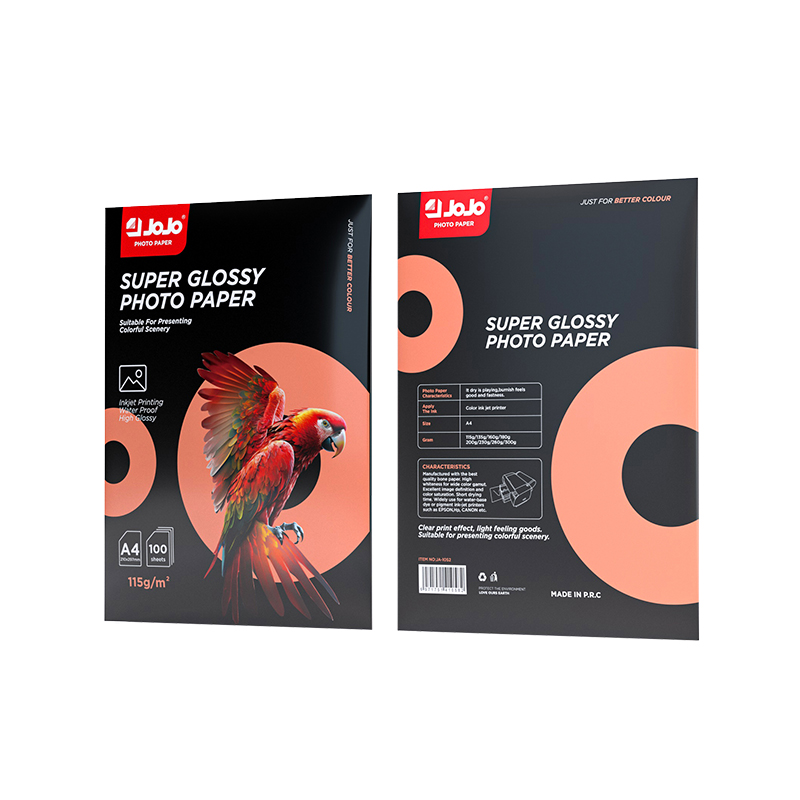If you need any help, please feel free to contact us
Water-Resistance Testing Methods For Coated Papers
As applications expand into areas like labeling, signage, photo printing, and shipping documents, water resistance becomes a critical performance metric. Understanding the water-resistance testing methods for coated papers helps manufacturers and end-users evaluate product suitability for specific environments, especially when using materials like self adhesive waterproof paper, thermal paper ink, and sticky back photo paper.

Understanding Coated Papers and Water Resistance
Coated papers are generally composed of a base paper and a surface layer that enhances ink holdout, gloss, or durability. The water resistance of such papers depends largely on the formulation and application of the coating layer. Coated papers used in outdoor or high-moisture environments, such as shipping labels or promotional materials, need to resist smudging, delamination, and distortion caused by exposure to water or humidity.
This is particularly relevant for self adhesive waterproof paper, a material commonly used for labels and decals. Its dual-function nature—requiring both strong adhesion and resistance to water—makes it subject to rigorous performance standards. Similarly, sticky back photo paper is frequently applied in craft projects and customized decor, where exposure to wet surfaces or handling can affect image quality. Even thermal paper ink, used widely in receipts and logistical labeling, must maintain legibility when exposed to accidental spills or humid storage environments.
Common Water-Resistance Testing Methods
Water-resistance testing can be performed using several standardized and practical techniques. These methods focus on evaluating changes in visual appearance, structural integrity, adhesion, and print clarity.
1. Water Immersion Test
In this method, a printed sample is immersed in water for a fixed period, usually ranging from 30 seconds to 5 minutes. The sample is then removed and air-dried. Observations are made on ink bleeding, paper distortion, and adhesive failure. This test is especially important for self adhesive waterproof paper, which must retain its stickiness even after brief water exposure.
2. Spray Test
A controlled amount of water is sprayed on the surface of the paper from a specific height and angle. This simulates rainfall or moisture contact in real-world conditions. After spraying, the paper is inspected for coating separation, ink smearing, and curling. Sticky back photo paper is often tested this way to ensure that water contact does not ruin the image or weaken the adhesive.
3. Drop Test
This test involves applying water droplets to the surface and monitoring how quickly the water is absorbed, repelled, or causes degradation. For thermal paper ink, this test helps determine whether printed characters will remain visible after brief contact with water.
4. Humidity Chamber Testing
Samples are placed in a controlled humidity environment, generally set between 80–90% relative humidity, for 24 to 72 hours. This test evaluates long-term exposure to moist air rather than direct contact with liquid water. Materials like self adhesive waterproof paper and sticky back photo paper are evaluated for dimensional stability and adhesion in this setting.
5. Rub Resistance After Wetting
In this technique, water is applied to the paper surface, followed by mechanical rubbing using a standard weight or abrasion tester. The goal is to simulate handling after a spill or in damp environments. This method is useful for comparing how thermal paper ink holds up under friction after being moistened.
Key Considerations in Water-Resistance Testing
When evaluating water resistance, it is essential to consider both the coating material and the substrate paper. A highly water-resistant coating may still fail if the base paper absorbs water and loses structure. Additionally, the compatibility of the coating with various ink types—such as pigment-based, dye-based, or thermal paper ink—can significantly affect performance.
In the case of self adhesive waterproof paper, adhesive formulation also plays a central role. A coating that performs well under water might still fail if the adhesive layer dissolves or weakens. Therefore, a holistic approach must be taken when designing and testing such papers.
For sticky back photo paper, maintaining both image quality and sticking performance is essential. The presence of water should not cause the printed photo to fade, and the back adhesive must remain active over time.
Water-resistance testing for coated papers is a vital quality control step in the production of durable printed media. Whether used for self adhesive waterproof paper, thermal paper ink applications, or sticky back photo paper, proper testing ensures reliability and functionality in various conditions. By applying standardized tests such as immersion, spray, humidity, and abrasion assessments, manufacturers and users can better understand product capabilities and make informed material choices for diverse usage scenarios.

 English
English Español
Español 中文简体
中文简体 Português
Português

